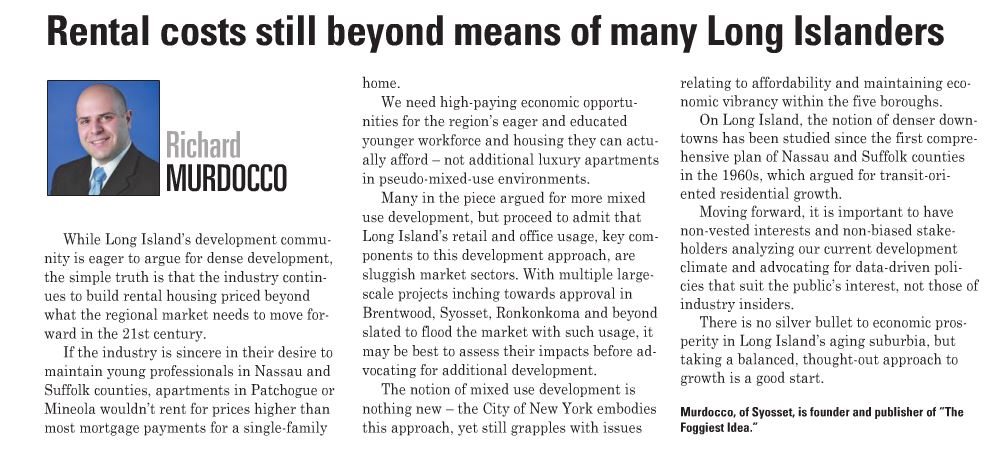The following was published in the June 17th edition of Long Island Business News on page 19. You can read the original here.
While Long Island’s development community is eager to argue for dense development, the simple truth is that the industry continues to build rental housing priced beyond what the regional market needs to move forward in the 21st century.
If the industry is sincere in their desire to maintain young professionals in Nassau and Suffolk counties, apartments in Patchogue or Mineola wouldn’t rent for prices higher than most mortgage payments for a single-family home.
We need high-paying economic opportunities for the region’s eager and educated younger workforce, and housing they can actually afford – not additional luxury apartments in pseudo-mixed use environments.
Many in the piece argued for more mixed use development, but proceed to admit that Long Island’s retail and office usage, key components to this development approach, are sluggish market sectors. With multiple large-scale projects inching towards approval in Brentwood, Syosset, Ronkonkoma and beyond slated to flood the market with such usage, it may be best to assess their impacts before advocating for additional development.
The notion of mixed use development is nothing new – the City of New York embodies this approach, yet still grapples with issues relating to affordability and maintaining economic vibrancy within the five boroughs.
On Long Island, the notion of denser downtowns has been studied since the first comprehensive plan of Nassau and Suffolk Counties in the 1960s, which argued for transit-oriented residential growth.
Moving forward, it is important to have non-vested interests and non-biased stakeholders analyzing our current development climate, and advocating for data-driven policies that suit the public’s interest, not those of industry insiders.
There is no silver bullet to economic prosperity in Long Island’s aging suburbia – but taking a balanced, thought out approach to growth is a good start.












If more apartments are developed, supply goes up and prices come down. The way to make rentals more “affordable” is to build more apartments.